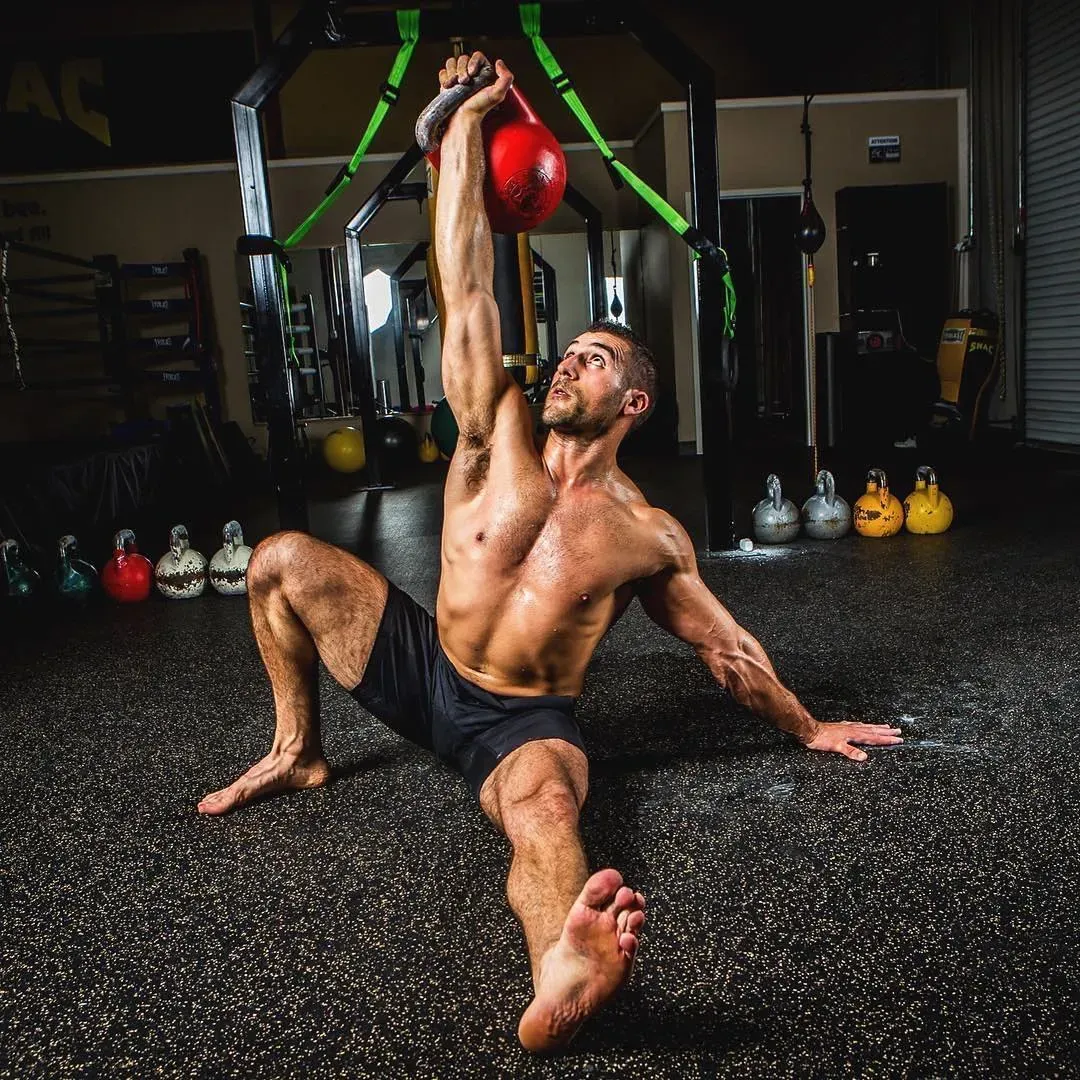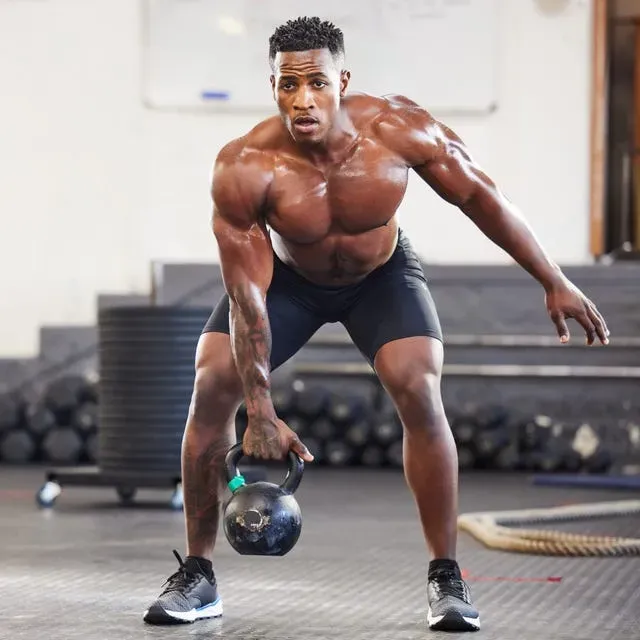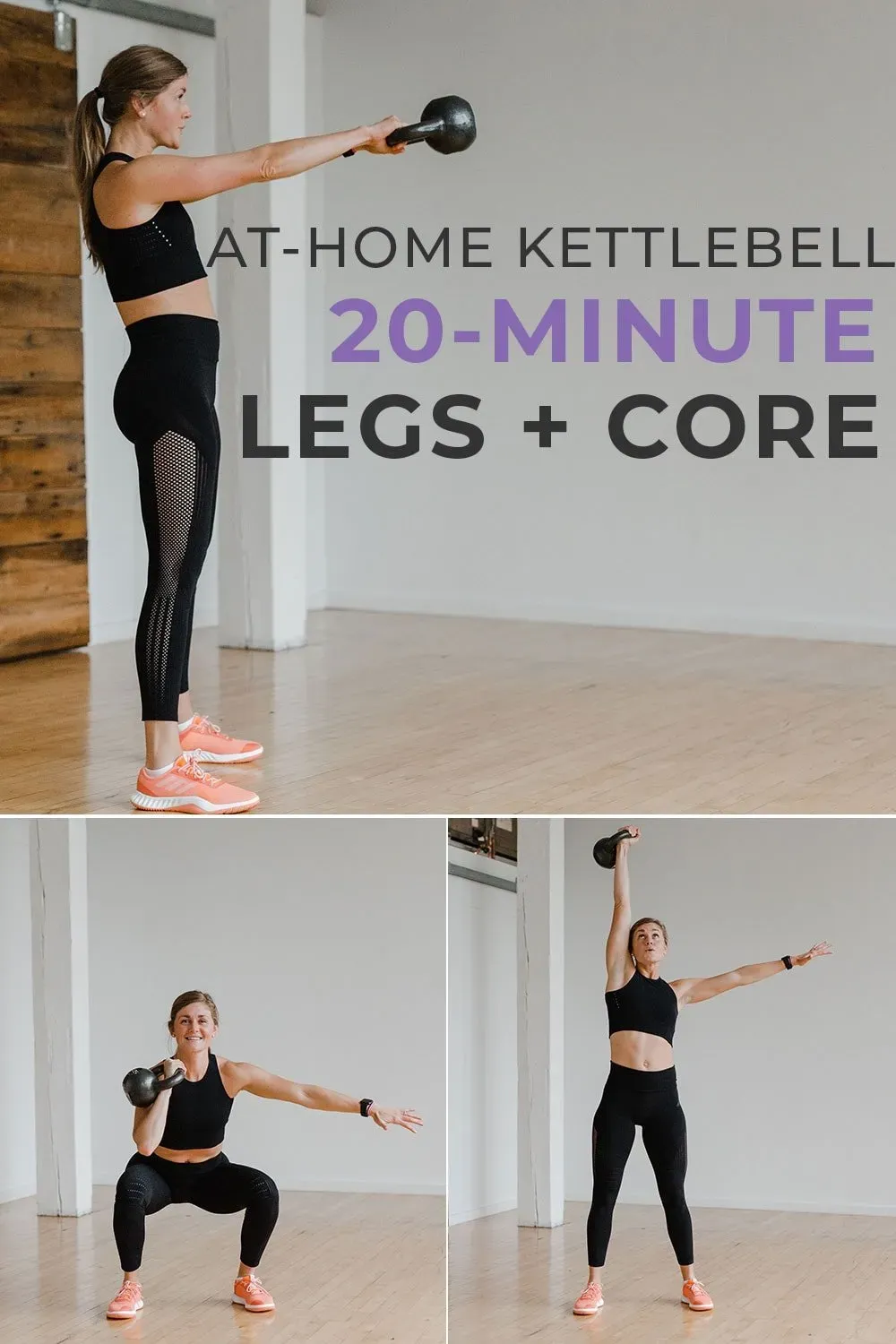Table of Contents
Let's be real: building strong, powerful legs isn't just about looking good in shorts. It's about building a solid foundation for your entire body, improving athletic performance, and making everyday tasks feel easier. Forget those endless sets on the leg press machine. If you're ready to truly challenge your lower body and build functional strength that translates outside the gym, you need to talk about kettlebells. Specifically, effective kettlebell workouts legs are a game-changer.
Why Kettlebells Crush It for Leg Workouts

Why Kettlebells Crush It for Leg Workouts
let's cut to the chase: Why Kettlebells Crush It for Leg Workouts isn't just marketing hype. While dumbbells are great for isolation and barbells let you pile on the plates, kettlebells offer a different kind of challenge for your lower body. Their off-center weight distribution demands more stabilization from your core and hips on *every* rep. Think about a swing – it's a dynamic, full-body movement that torches your hamstrings and glutes while spiking your heart rate. Unlike static machine work, kettlebell exercises like goblet squats, lunges, and deadlifts force your stabilizing muscles into overdrive, building real-world strength and improving balance. You get strength, power, and often a decent hit of conditioning all in one go. It’s less about simply lifting weight up and down, and more about controlling a dynamic object through space, which is frankly, how your body actually moves outside the gym.
Mastering the Swing: A Core Kettlebell Leg Exercise

Mastering the Swing: A Core Kettlebell Leg Exercise
Alright, let's talk about the swing. If you do nothing else with a kettlebell for your lower body, learn this. The kettlebell swing isn't just some random movement; it's the absolute cornerstone of effective kettlebell workouts legs. It's a dynamic hip hinge, not a squat, driven by powerful glute and hamstring contraction. Think of it like jumping, but horizontally. You're not lifting the bell with your arms; your lower body, specifically your hips, generates all the force to propel that weight forward. Mastering this movement builds explosive power in your posterior chain – the engine room of your body – like almost nothing else. It torches calories, improves hip mobility, and teaches you to generate power from your core outwards, which is pretty fundamental for, you know, moving like a human.
Squats and Lunges: Essential Kettlebell Workouts for Legs

Squats and Lunges: Essential Kettlebell Workouts for Legs
so the swing is your power driver, the engine. But you still need the fundamental building blocks of strength, and that's where squats and lunges come in. These aren't revolutionary movements, obviously, but doing them with a kettlebell? That's where the magic happens for effective kettlebell workouts legs. Take the goblet squat. Holding the bell at your chest forces you to stay upright, improving posture and hitting your quads and glutes like nobody's business. It's often easier to learn than a barbell squat for many beginners. Then there are lunges – forward, reverse, lateral. Holding one or two kettlebells challenges your balance and unilateral strength, correcting imbalances you might not even know you have. You can load a lunge differently with a kettlebell (rack position, farmer's carry) than with a dumbbell or barbell, hitting your muscles in slightly different ways and demanding more from your core stabilizers. They are non-negotiable staples for serious leg development.
Beyond the Basics: Advanced Kettlebell Leg Exercises

Beyond the Basics: Advanced Kettlebell Leg Exercises
So you've got the swing down, you can goblet squat for days, and lunges feel solid. Ready to push the envelope with your kettlebell workouts legs? This is where things get spicy. Think about movements that challenge your balance and stability even further. The single-leg deadlift with a kettlebell, for instance, isn't just about hamstring strength; it's a brutal test of core stability and ankle mobility. Or consider the pistol squat, holding the kettlebell out front as a counterbalance – it demands incredible leg strength, balance, and mobility all at once. These aren't beginner moves. They require a solid foundation built on the basics. But when you're ready, they unlock new levels of lower body power and control, making those fundamental kettlebell workouts legs feel like a warm-up.
Crafting Your Own Kettlebell Leg Workouts

Crafting Your Own Kettlebell Leg Workouts
Starting Points and Setting Goals
so you've got the basic moves down – the swing, the squat, the lunge. You're feeling the burn, seeing the potential. Now, how do you actually put this all together into effective kettlebell workouts legs? First things first, what are your goals? Are you trying to build pure strength, improve power, or just get a solid conditioning session in? Your goal dictates your approach. If strength is the aim, you'll focus on heavier weights and lower reps (think 3-5 sets of 5-8 reps) on foundational moves like goblet squats, double kettlebell front squats, and maybe some heavy swings. For power, you'll stick to explosive movements like swings, cleans, and snatches, keeping reps lower (3-5 sets of 3-6 reps) and focusing on speed and technique. Conditioning? Higher reps (8-15+) with lighter to moderate weight, often in circuit style or complexes. Don't try to do everything at once. Pick one or two main goals per training cycle.
Structuring Your Kettlebell Leg Session
Once you know your goal, structuring your kettlebell workouts legs becomes clearer. A good session usually starts with a solid warm-up – dynamic movements, maybe some light swings to prime the hips. Then move into your main strength or power work. This is where you hit those heavy goblet squats or focus on perfecting your swing technique. After the main lift, you can move to accessory work or conditioning. This might involve lunges, single-leg deadlifts, or calf raises. Or, if conditioning is your focus, you'd structure the whole thing as a circuit, moving from one exercise to the next with minimal rest. Listen to your body. Some days you might feel strong and ready for heavy lifts; other days, a lighter, more movement-focused session might be better. The beauty of kettlebells is their versatility.
Here's a simple structure idea:
- Warm-up (5-10 minutes): Joint mobility, light dynamic stretches.
- Main Lift/Power (20-30 minutes): Focus on 1-2 key exercises (e.g., heavy goblet squats, explosive swings). Work on technique and progressive overload.
- Accessory/Conditioning (15-20 minutes): Choose 2-4 exercises to complement the main lift or elevate heart rate (e.g., lunges, single-leg deadlifts, kettlebell complex).
- Cool-down (5 minutes): Static stretching, foam rolling.
Progression and Listening to Your Body
How do you keep making progress with your kettlebell workouts legs? It's not always about just adding more weight, though that's one way. You can increase reps with the same weight, increase the number of sets, decrease rest time between sets, improve your technique (which often allows you to handle more weight safely), or move to a more challenging variation of an exercise (like going from a goblet squat to a double kettlebell front squat). Consistency is key. Don't jump around programs every week. Stick with a plan for 4-6 weeks, focusing on getting stronger or fitter in your chosen exercises. And perhaps most importantly, pay attention to what your body is telling you. Soreness is normal, pain is not. Recovery is just as crucial as the workout itself. Get enough sleep, eat well, and don't be afraid to take a rest day or perform a lighter, active recovery session when needed. Smart training beats just training hard any day.
Building Your Foundation with Kettlebells
So there you have it. Ditching the predictable machine routine for kettlebell workouts legs isn't just a trend; it's a smart move for building real-world strength and power. You've seen how these simple weights can challenge your balance, stability, and core like no other. From the explosive swing to the foundational squat and lunge variations, kettlebells offer a versatile toolkit. It takes practice, sure, and maybe a little grit, but the payoff in stronger, more functional legs is undeniable. Go pick up that bell and put in the work.